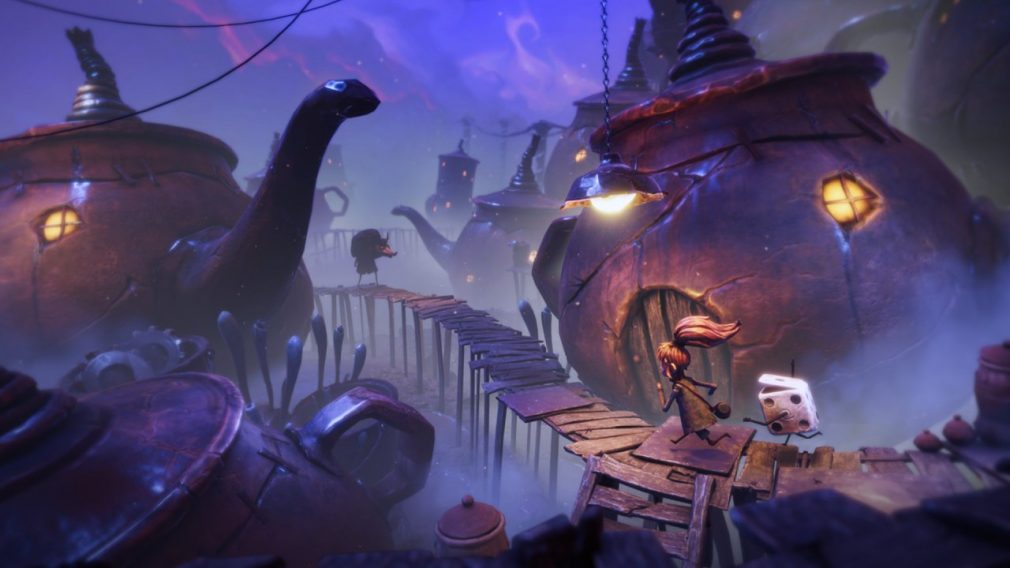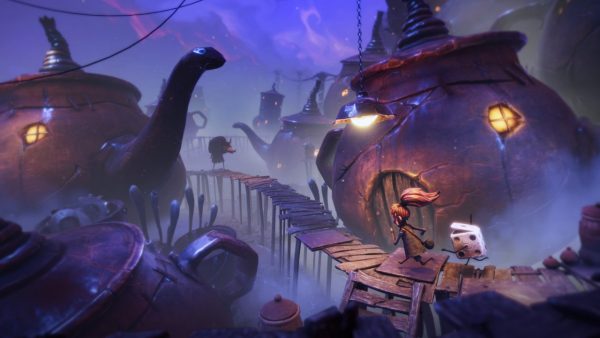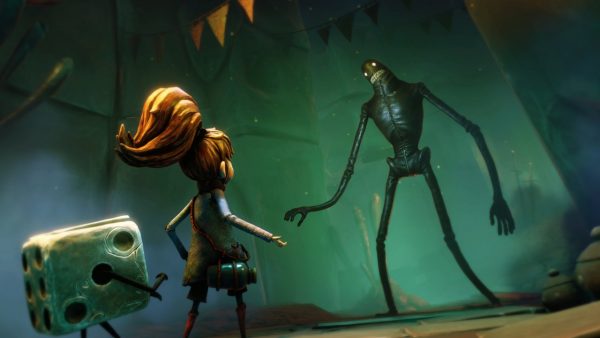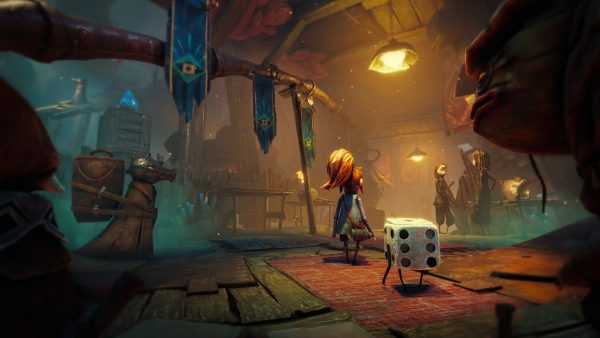Also on: PC, PS4, PS5, Xbox One, Xbox Series X
Publisher: Electronic Arts
Developer: Zoink!
Medium: Digital
Players: 1
Online: No
ESRB: E10+
If you’re going to play Lost in Random, you probably shouldn’t play it on the Switch.
It’s not that it’s not bursting with inventiveness — it is. The game melds together hack & slash action with rolling the dice and collecting and playing cards. You wouldn’t think all those things would work well together — in fact, you may think that they’re completely opposite — but Lost in Random knows how to make it work. In fact, not only does it work, it works well, to the point that even someone like me, who isn’t usually overly fond of complicated mechanics, found it shockingly intuitive to pick up. To be sure, you have to learn to balance hacking away with your sword, with picking up crystals that help create cards and knowing exactly when to pause and roll the dice, but for a system that you won’t find anywhere else, it’s awfully easy to figure out the basics at once.
(For that matter, it’s a game that rewards dodging and resource management — again, things I’m not hugely fond of, but things that, in Lost in Random’s hands, are fairly easy to do.)
Likewise, it’s not that the game doesn’t have a richly imagined universe. You can tell the game and its world were heavily inspired by the likes of Tim Burton (and, specifically, Coraline), with cities full of grotesque-looking humans, oddly shaped buildings, and characters with fleshed-out stories. On top of that, the game was written by Ryan North — a well-known comics writer of titles like the Unbeatable Squirrel Girl, Adventure Time, Dinosaur Comics, and Romeo and/or Juliet: A Chooseable-Path Adventure — which means that it’s generally got a good idea of how to keep its story moving along in a fun way for about twenty hours.
Where it all falls apart, unfortunately, is that it all looks and runs like garbage on the Switch — at least in handheld mode. While I’m sure it’s stunningly beautiful (in a gothic kind of way) on more powerful systems, on the Switch I’m not exaggerating when I say Lost in Random looks like a game that belongs on an older-gen system.
Much, much older. Like, PS2-level older.
That may sound like I’m making it out to be worse than it is, but I’m really not. Everything looks blurry and unfocused, and the game makes use of the old ?shroud everything in fog to hide shortcomings” trick that horror games used a few generations ago. Even worse, you can practically see the world falling apart, whether you’re looking from a distance (and you see gaps where buildings need to pop in) or up close (where the game’s assets don’t fully materialize). It’s bad, and there’s no way around that unfortunate fact.
And it really is unfortunate, because, as I said, there are quite a few good elements to be found here. I’d even go so far as to say that if you can overlook how hideous it is, then Lost in Random is incredibly rewarding. But at the same time, there are some very real performance issues here, and if you don’t want to spend dozens of hours straining your eyes at ugly graphics, I certainly wouldn’t blame you.
Electronic Arts provided us with a Lost in Random Switch code for review purposes.




